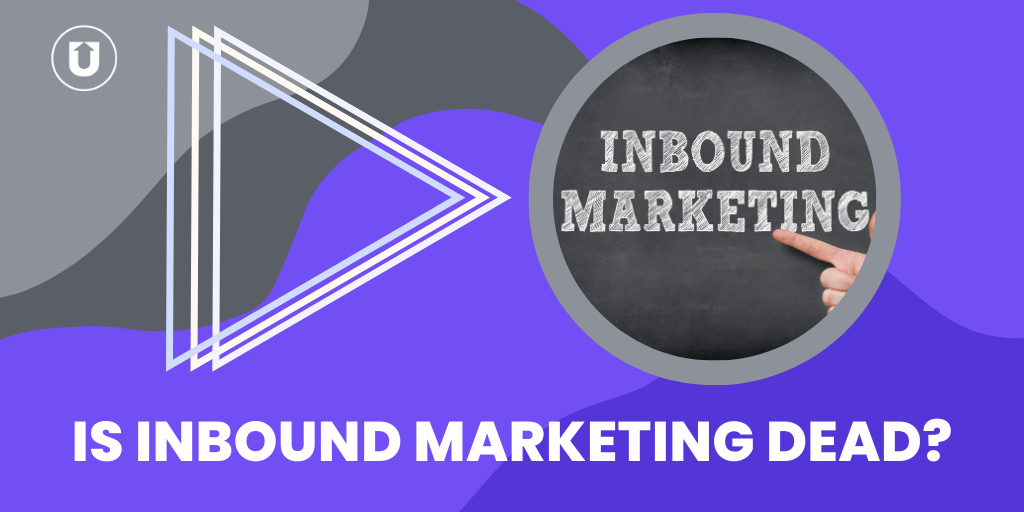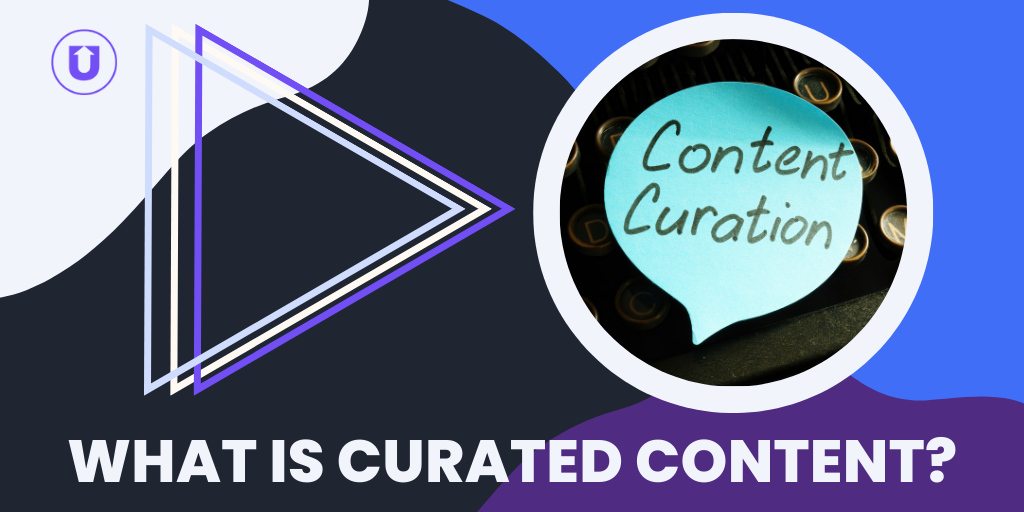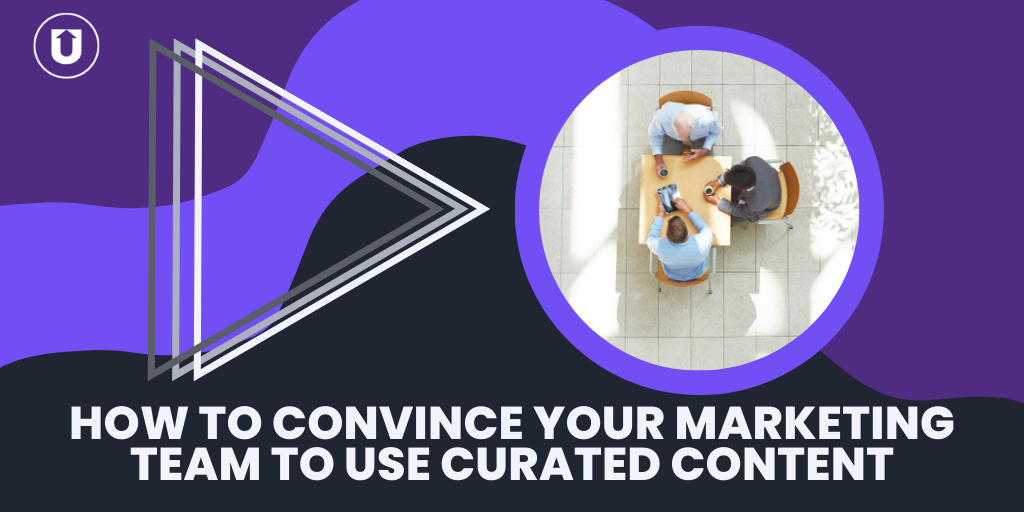Is Inbound Marketing Dead?

When inbound marketing made its debut, it was a slow adoption rate, but after seven years, it took off - ushering in a new approach to attracting and converting new customers.
But in the 2020s, nearly everyone has unlimited access to unlimited knowledge at their fingertips, and the rate of content creation has reached a fever pitch with the proliferation of generative AI technologies such as ChatGPT.
So how do you make sure that your target prospect makes their way through all of their questions on your site, trekking through the meticulous content funnel you created to lead them to a sale?
Marketing is not linear anymore. Perhaps it never truly was; there was just less content to compete with in the early days of inbound marketing.
UpContent was born out of a marketing agency where we found that only creating original content wasn’t as effective - both in the volume of conversions and level of investment - as sharing a mix of high-value third-party content, a.k.a. curated content.
When we realized that the curation process was extremely valuable, we wanted to find a cost-effective solution, so we built software that curates the content for you and allows you to automate the searching and sharing while maximizing your time to choose the best content for your audience.
In this article, we’ll discuss a new way to approach the original tenents of inbound marketing, why you can’t write your way into thought leadership anymore, and how to become a resource your target customers will consistently turn to for answers - even if they aren’t yet ready to convert.
Inbound Marketing Is Still Viable
The idea of inbound marketing was the counterpoint to cold calling and forcing your message down people’s throats.
Inbound marketing’s revolutionary idea was to let people learn your message on their own time and help guide them to the point where they’re making the decision to talk to you; you’re not making the decision for them.
That’s not dead!
But the tactic of exclusively creating volumes of original content to realize the benefits of inbound marketing is dead.
This “create as much content as you can to guide your prospects” tactic has aged out in the last decade or so due to the sheer number of blogs out there (more than 600 million blogs, to put a number on it).
Traditional inbound marketing experts would tell you that a primary objective is to to keep people on your site for as long as possible and make it difficult for them to leave.
Download this, and sign up for our newsletter. Are you really ready to leave?
These tactics are no longer (were they ever?) effective, especially for people making non-impulse decisions, such as choosing who will do their taxes or which enterprise ERP system they will use.
Even if you had the best site in the world, it’s unlikely that your site will be the only site a prospect looks at.
Why Are We Scared To Let People Learn Elsewhere?
According to HubSpot, the average session-to-contact rate on a website is usually <1%, with good rates ranging between 2-5%. UpLead shared that even the top 10% of B2B websites only have a conversion rate of 11.7% and that the average is a lowly 2.23%.
So they’re saying you’re outperforming the average if 98% of the people who visit your site don’t convert, and if only 88% leave without converting, you should stop reading now and go ask for that promotion!
If you think about it, it’s the exact same strategy from cold calling and outbound marketing applied to your website!
You know, the ole “call ten people to get one yes,” adage.
You’re trying to attract as many people as possible, so the number of conversions increases by sheer numbers.
If you drove people to your site (likely for a fee) and there wasn’t something of interest to them, or you didn’t help them in their journey of making a decision or giving them anything useful?
You likely won’t be at the top of their list when they are ready to make a decision or recommend options to a colleague or friend.
So why do we fear people leaving our sites?
What we should be afraid of is them arriving at your site and realizing the time they are spending has been wasted.
Most are going to leave your site regardless. But will they want to come back when they are ready?
You Can’t Write Yourself Into Thought Leadership Anymore
Are you, or your marketing team, writing and publishing 3-5 blogs a week but find that a majority of this content finds you doing copious Google searches and cobbling together insights found within content that has already been written rather than sharing something new??
Why write about topics where you and your team doesn’t have first-hand knowledge and experience??
For the SEO benefit? Sure, you might get somewhere with that, but with 4.4 million blog posts being published daily, playing the SEO game will take a long time to pay off, if it ever really does.
Because it is a question that your target prospects want to be answered?
Helping your ideal customers find the answers to their questions is critical, but wouldn’t it be best if you shared these resources you are using to create the original content directly rather than burying them in hyperlinks within your own post?
Even better - share a few insights as to why you find this piece valuable in answering a common question you hear.
And in the time it takes to create those other articles you have to research to provide substance, you’re basically curating the information and citing it like a research paper.
And you STILL may lose the traffic when your visitors look to back up what you’re saying.
In the earlier days of inbound marketing, the writing competition wasn’t as fierce. There was a vast landscape of available web locations for content to be found.
You could literally write and publish your way into thought leadership, but not anymore.
You have to break through the noise in a different way.
Stepping Away From A “Creation Only” Mindset
Content creation is and always will be one of the most valuable content marketing strategies out there.
Valuable original content is an asset that can be refreshed, repurposed, and distributed in a variety of ways to bring value back to the individual and organization that created it.
But with how inbound marketing flooded the world with so much content, we need to be willing to take our blinders off, like we did with outbound marketing, and be open to other tactics for how we help our prospects get the answers they need on their own terms - in a way that removes the friction of the process.
One of the big tenets of inbound marketing is to ensure a prospect can easily get all of their questions answered and qualify themselves that you are the best for their needs - whenever those needs arise.
It’s not about simply creating for the sake of volume.
When those answers didn’t exist, creation was the best way to solve it.
But in today’s world, just slapping together bits and pieces of content from others or rewriting something you read in order for it to be seen as “original”, only slows down your prospect’s process and adds friction rather than removing it.
So if people are going to go somewhere else, why not provide them with the best place to go, along with some of your thoughts or reasons for sharing that particular source?
Be The Resource They Remember
Don’t write content just because you feel like you have to. If it’s not what you specialize in or you already have unique knowledge on the topic, give your prospects a shortcut in finding those who do.
Authenticity is key nowadays, so why would you pretend to be an expert on something you’re not?
No one expects you to be the best at everything, and if you present yourself as such, your true differentiators can be muddled.
Chances are, whatever article you put together that is now rife with hyperlinks to other sources isn’t going to leave the reader without further questions, so why would you want to spend time creating something that doesn’t help your readers reach their goals?
That’s working in the opposite direction of inbound marketing.
Instead, by sharing content from other experts in your field who have a unique perspective and are respected for their expertise, people will remember that you always share great content, regardless of whether you wrote it or not.
CEO of Databox, Peter Caputa, recently shared to his LinkedIn about this, and he says that when reviewing data from top inbound marketing sites, those who are embracing more collaborative and curated efforts are seeing better results!
The old way of inbound marketing was about proving your own expertise.
This new way is about curating the expertise of your market.
By doing so, you're continuing to develop your expertise and you're doing it in front of everyone.
You're proving that you're always learning; staying a step ahead.”-Peter Caputa
The Future of Inbound Marketing
We know that inbound marketing works; there is a reason it has skyrocketed and changed how consumers operate.
Allowing people to easily discover answers to their questions on their own, rather than cold calling or overwhelming people with outbound marketing efforts, is always going to be the better solution, but the tactics on how to get people to come to you will continue to change.
In fact, 55% of customers who feel in control of their buying process will be happier in the long run and will stay longer.
Accepting that the inbound funnel is more of a flywheel with a nonlinear approach to learning about solutions means you can take advantage of this and help guide your prospects, even if they are learning from sources other than you.
If you’re interested in learning more about adding curated content into your content mix to take advantage of this tactic, schedule a call with one of our Content Curation Experts today!
Or, if you’d like to continue educating yourself, check out a few of these other articles!
Using Curated Content To Build Credibility When Everyone Is Using AI



